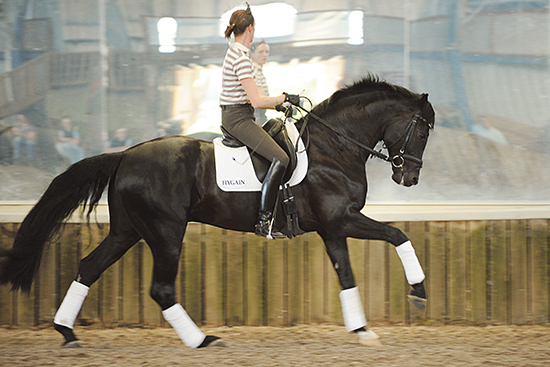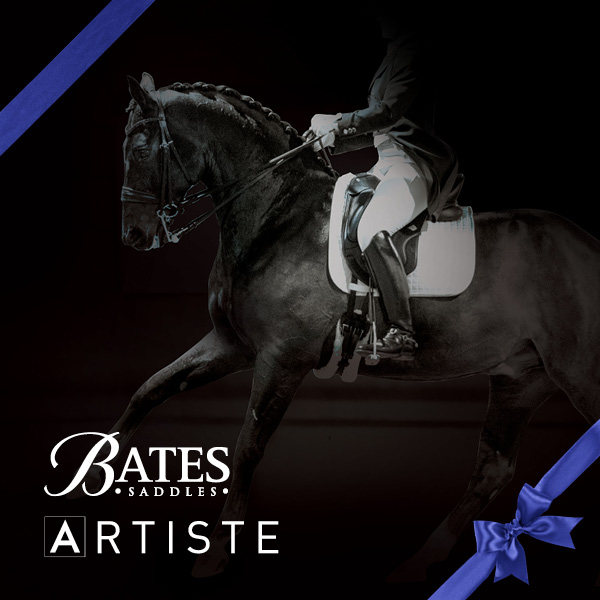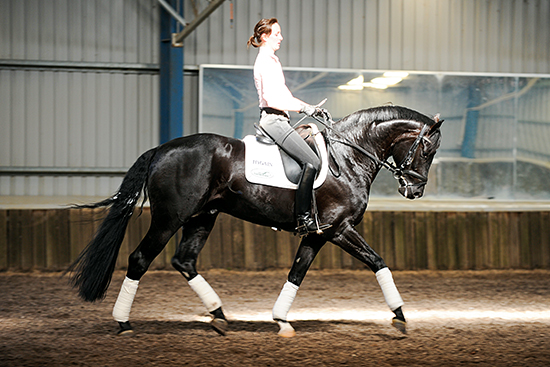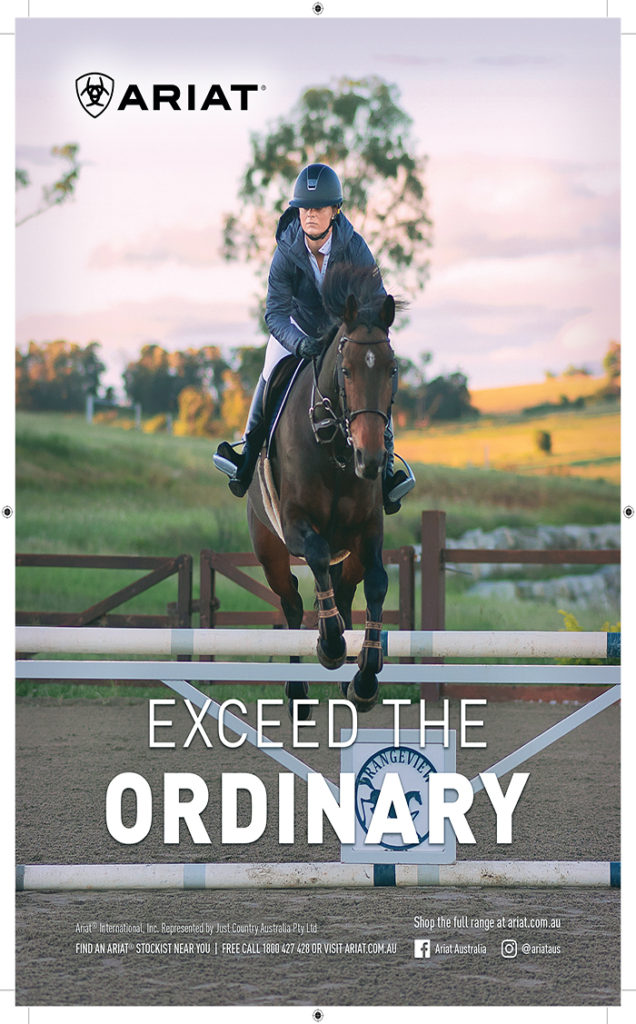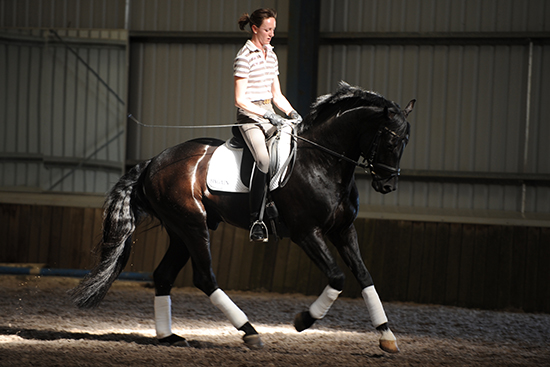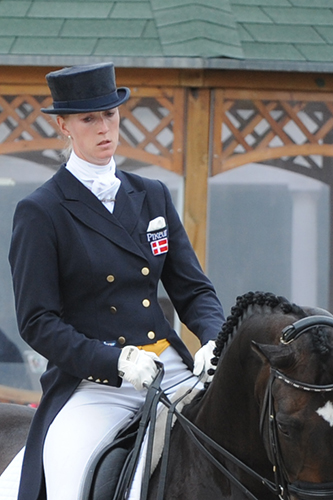Words Chris Hector and Photos by Roz Neave
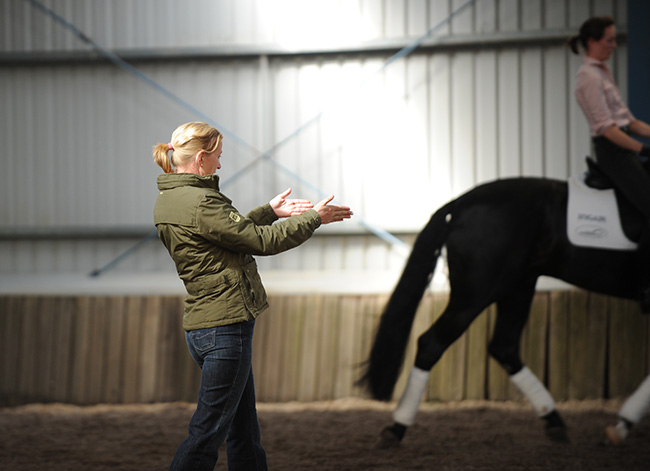
Join us for a clinic with one of the world’s very top dressage coaches, Princess Nathalie…
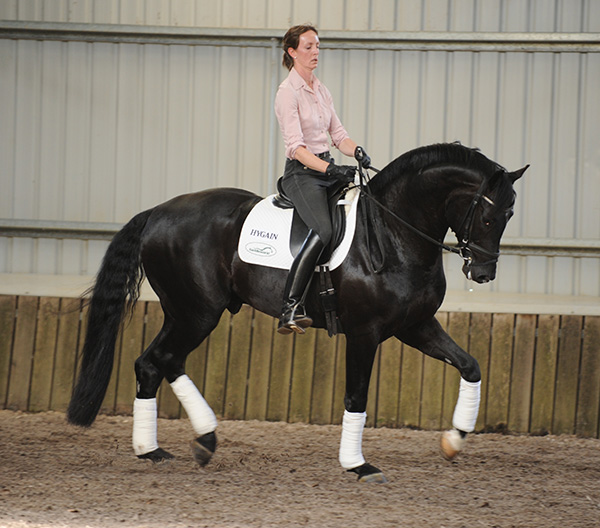
In this clinic Nathalie was working with Gitte Donvig and the young stallion, Shiraz Black. Gitte tells the Princess that he ‘can be a bit sticky at the start’. A bit sticky seems to be an understatement as the horse executes acrobatics across the arena. It is moments like these that the Princess is probably feeling thankful she hasn’t got her boots on. However, Gitte calms him down and the young stallion, who she has been riding since March, relaxes nicely. There is one consolation for Gitte after a minute or two of bouncing around the arena, since Gitte’s mother, Mary Hanna, watching proudly from the sidelines, confesses that when she got on Shiraz after returning recently from Europe, his antics caused intense pain to her dodgy back, and Gitte got to keep the ride…
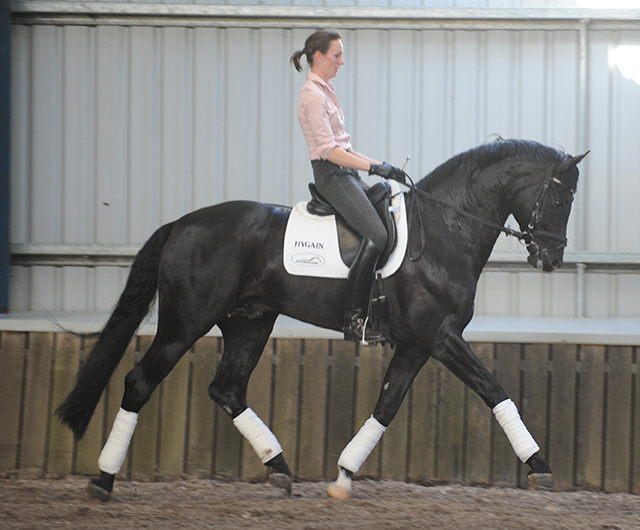
The black stallion has lovely paces but is trying to lean to the outside. The Princess notices this immediately and instructs Gitte to ‘tell him to stay in the middle of his shoulders’ and to keep her lower leg on the girth, not behind, so as to keep him ‘straight underneath you.’ Again lots of half halts are used, and as the horse is not responding quickly enough, not doing what Gitte asks of him, the Princess tells her to ‘be really aware when you ask him to go forward he does it immediately, not when he wants to.’
More follows below
Princess Nathalie emphasises the importance of having the horse in front of your leg, particularly with stallions, for when you later ask for collection:
‘if you can’t get them in front of your leg when they are four of five-year-olds don’t think you’ll get them in front when you start doing more collected work.’
“Feel that you can balance his shoulders between your hands. Keep steadying your seat. He has to step under your seat. He has to be able to balance himself on his hind legs rather than plunging down. He will need this balance when he starts to do pirouettes.”
Gitte is told not to exaggerate carrying her hands high, ‘I don’t want these Bundeschampionate arms,’ laughs the Princess, as Gitte puts in a couple of the exaggerated uberstreichen (giving of the rein) that are such a feature of the great young horse showman, Ulf Möller’s repertoire. Gitte spent quite a lot of time at PSI working with Ulf, and is obviously a good student.
When working in the walk, the Princess says that she hardly works on collection in the walk, that ‘if they can collect in the trot and collect in the canter they can collect in the walk.’ It is important not to lose the quality of the walk, or in higher classes ‘lose a lot of marks for nothing.’
The horse is then put through some half pass work. The young stallion tires when going across the whole diagonal and the Princess gets Gitte to just ask for some small amounts of lateral movement, not the entire diagonal. ‘Don’t try for the whole 60m, kick him if he gets too squashy on your leg, get the rhythm back and try again.’ With this technique the horse keeps his rhythm much better. ‘Don’t ask for it to be perfect all at once,’ the Princess tells Gitte, ‘he still has to learn it and keep the balance – he is a baby.’
“Take the hind legs with you on the diagonal, but don’t ask too much. That’s what I would do with a five-year-old to get him to half passes in the correct way. As Kyra says, ‘don’t try to make a problem out of a problem’.”
The Princess tells Gitte off for not holding a straight line on the diagonal, ‘if you’re unsure, you’ll make him unsure’. Gitte later explained this was due to not being able to see the end of the arena, but kept on with the lesson, squinting at the far side.
Despite Gitte assuring us Shiraz Black would be calm the next day, with no wickedness, we have a little show at the start of the lesson. He is revved up by the first canter transition with a pig root and it looks like we could have a repeat of yesterday. However, after a big canter around the arena Gitte has him under control again. Princess Nathalie says less in this lesson as they work on the same elements, but focuses on the pair the whole time.
Using the exercise for the leg yields, they focus on moving the hind quarters a little on the diagonal, not the whole way. Princess Nathalie tells Gitte to ‘push away his outside leg, if he hasn’t got that, he will find it hard in half pass.’ Shiraz Black understands well and Gitte looks happy with him, which the Princess acknowledges, ‘you have to be satisfied with those steps – he understood what you wanted, he is truly responding to your leg.’ The Princess uses another of her interesting explanations, telling Gitte in the leg yield left to ‘ride his right shoulder into your left rein’ not pulling the rein, just riding the right side of the horse into the left rein and ‘just asking the hind legs to follow’
Even on a twenty metre circle the Princess emphasises straightness, ‘he really has to get straight – shoulders in front of hind legs, really straight.’ ‘Keep his right shoulder in front of his right hind leg’, straight. This emphasis on straightness really appears to be her adage in dressage, ‘you want the neck to come straight out of the shoulders, don’t want to overbend him’.
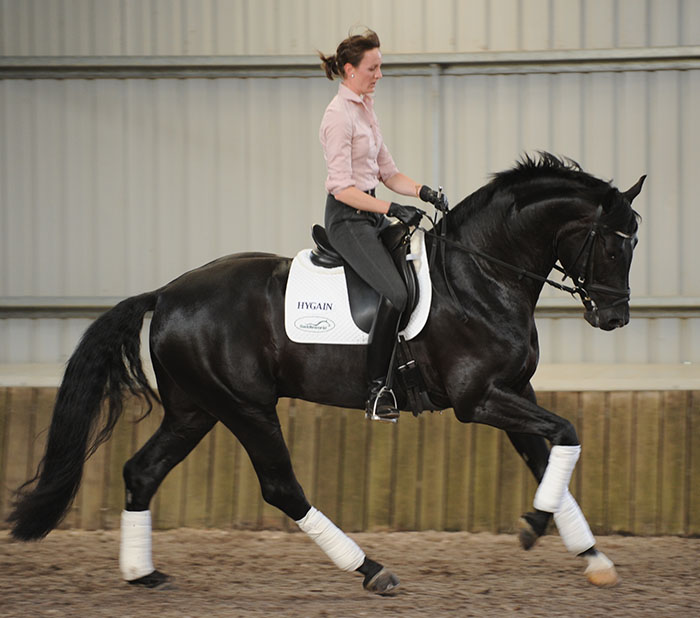
In the canter Princess Nathalie tells Gitte that ‘you have to be able to sit there and it looks like you are doing absolutely nothing.’ They focus on the rhythm of the canter, ‘it’s more important to keep the canter good’ than to have such a big canter, as ‘he needs to have time to put his legs underneath him’. The horse really has an effortless canter; he looks to be just bouncing.
more follows
The Princess emphasises the importance of getting a reaction every time, ‘he’s not reacting to you, make him react.’ Gitte promptly gives the horse a kick and he pigroots, ‘there, you got a reaction,’ Shiraz Black quickly calms and responds much better to Gitte.
The last ten minutes are spent on the trot work. Balance is emphasised again as ‘we don’t want these big long steps, he needs time to put his legs underneath him. Too long makes it difficult for him to balance.’ Shiraz Black does have a nice, expressive lengthening of the stride which the Princess acknowledges, however she tells Gitte to work on the other aspects, ‘you know he can lengthen, so don’t do it too much. That’s what I would do.’
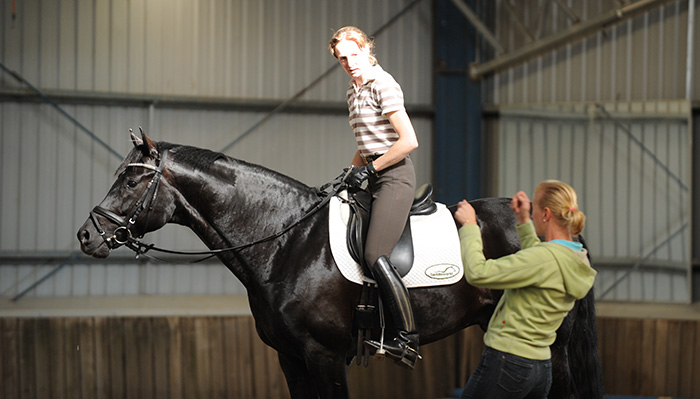
They finish the lesson with an affectionate pat for Shiraz and a quick word of praise from Princess Nathalie, ‘today was much nicer Gitte.’
Chris Hector spoke with Gitte Donvig after the first day:
“She’s an amazing instructor. I knew that she had the really good training from Kyra (Kyrklund), and Mum had spoken very highly of her riding. She was a very good communicator and had a very good way of explaining things. She was very good on the technical things – like teaching Shiraz the half pass. He is a stallion and he can come a little against my leg sometimes, she showed me how to find a way to ride it, that made it easier for him, and that made it very easy for me.”
“She said not to try and ride a whole half pass, to ride a little bit across the diagonal, and then take the hind leg a little bit, and then if I lost rhythm to go straight on the diagonal again. To give him always the chance to have the rhythm, and make it easy for him – because he is still a five-year-old.”
I thought it said something about the difference between riding in Europe and riding in Australia that Nathalie got after you for not aiming exactly at your marker on the wall…
“I had to pick a pole, but unfortunately I can’t see that far, so I was having a little bit of trouble, but I squinted and got there eventually.”
But it is a bit of an Australian thing, oh yeah, I’ll do it exactly when I get to the competition but at home it’s a bit of an Achilles heel…
“Absolutely. It was the same as she said about concentrating on every transition, especially with a stallion, he’s got to be in front of you and he’s got to go when you say ‘go’ and stop when you say ‘stop’. It seems very basic but you forget to do it, you start concentrating on other things and lose some of those important details.”
Nathalie was very interesting with her emphasis on keeping the horse’s shoulders between your knees and hands and straight in front of you…
“Again, if you spoke to my mother, that’s a bit my Achilles heel, bending them too much in the neck and then losing the shoulder.”
But that is the easy thing to do – tug on their mouth and you get a reaction…
“Especially if you think they might be about to do a bit of a yee-ha, it’s a nice place to be then. But really it helps to just think about having the horse between my hands, that got it into my skull.”
And not try to ‘help’ by taking your hands up…
“That might be a little bit to do with some of the training I’ve had in the past – not Mum’s – so I got in trouble for doing the over-exaggerated ‘Bundeschampionate’ give away of the reins. I thought ‘oh I wonder where I got that from’. But it’s good, it is good basic, correct riding. It’s a different style of riding from what I’ve done before at PSI but this is riding for Grand Prix – the important stuff.”
I think it is always interesting where you see a lesson from someone like Nathalie who is currently riding and riding at the highest level?
“There’s a certain degree of sympathy and understanding I think, when you have someone like that teaching you. She said a few things to me, like ‘I know he’s by Sandro Hit, what’s on dam’s side’ – Donnerhall, oh okay – and you could see her thinking I can understand this horse a bit better because I’ve ridden ones bred like that. It means the instructor can help you with more perception. And for test riding today – it’s not the same as it was twenty years ago, it’s changed dramatically. It was really enjoyable, I got a lot out of the lessons.”
Finding your style…
Like so many of the world’s top riders, Princess Nathalie started out with lessons from the great Kyra Kyrklund….
“I was sent to Kyra when she was at Flyinge in Sweden. When I’d made my students exam, my parents sent me to her, and it was meant to only be for half a year to see if I had the talent, and if it was really what I wanted to do. From half a year it became four years, and then when she moved to England, I moved to Germany and started training with Klaus Balkenhol.”
What are the key elements of Kyra’s training that help you?
“Kyra’s way of training has followed me all through my career. It’s a way that suits me very well, the ability to explain what feelings you should have in certain moments. It’s not just like the German way: pull on the right rein and take the left leg then whoosh the horse goes to the side. You want someone to explain the feeling, which feeling am I looking for when the horse is doing that. Kyra is just unique in explaining things.”
But it is all still within the framework of the Training Scale?
“Absolutely, Kyra is really stuck on that German Training Scale, it is a system everyone can copy. I really like the way Kyra trains, and the system that Klaus (Balkenhol) follows, it is also along the lines of the German Training Scale, so it was good to take first Kyra and then Klaus and it helped me to develop my own hand writing in riding.”
“Kyra and Klaus are very similar. There are a lot of parallels, but again, both of them have their own hand writing. Everyone has a little bit their own way, but the main red thread is the same red thread.”
Klaus is not such a ‘talky’ instructor?
“No, you put him on the horse, he rides the horse, corrects the stuff, and you get back on and feel what it feels like. He is not so good in explaining things, but then again, Kyra is just unique, there is nobody else like her.”
Watching you teach, you are a ‘talky’ trainer, you give a lot of information, lots of layers…
“I think that is where I have a little bit of Klaus and a little bit of Kyra. I like the way Kyra can explain, and that’s what I try to give on to the pupils, but again you have to get this German discipline into the riding – trying to go from point-to-point and really think of what you are doing there, not just riding around… If you don’t ride from point-to-point, you lose one mark, and it is a stupid mark to lose just because you are not riding from letter to letter. If you have a mistake in the movement, if you go from one letter to the next and hit the point, you should still get one or two marks for that, even if the horse breaks gait, you should still get a two or a one because you hit the marker.”
It was interesting, your concentration on straightness?
“It’s all about straightness. If a horse is not straight, you will always have difficulties, for example the half pass left and right, it makes it very difficult to get the same quality. A horse always has one weaker side, so it is important that you train both sides to be the same.”
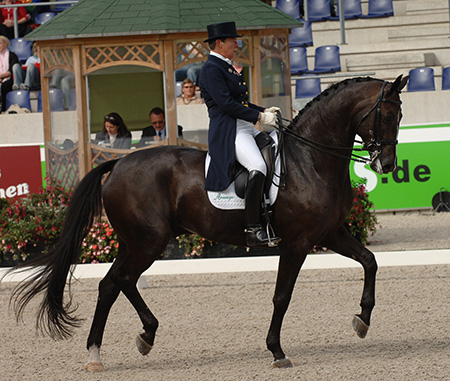
The mentor – Kyra Kyrkland
Your channel was important, between the arms, the shoulders, the legs…
“It all hangs together, if you don’t get the first step, you definitely won’t get the second and third or fourth step. You have to get the first step right to be able to get the other steps right.”
This article first appeared in THM December 2008.
Breeding a dressage horse? How about Valverde a member of the famous “V’ Family? Go to www.ihb.com.au for Valverde and many other top stallions for the upcoming 2022 season
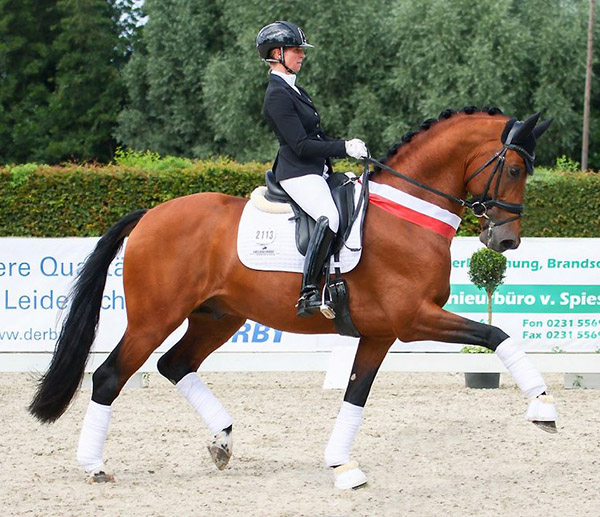
Valverde
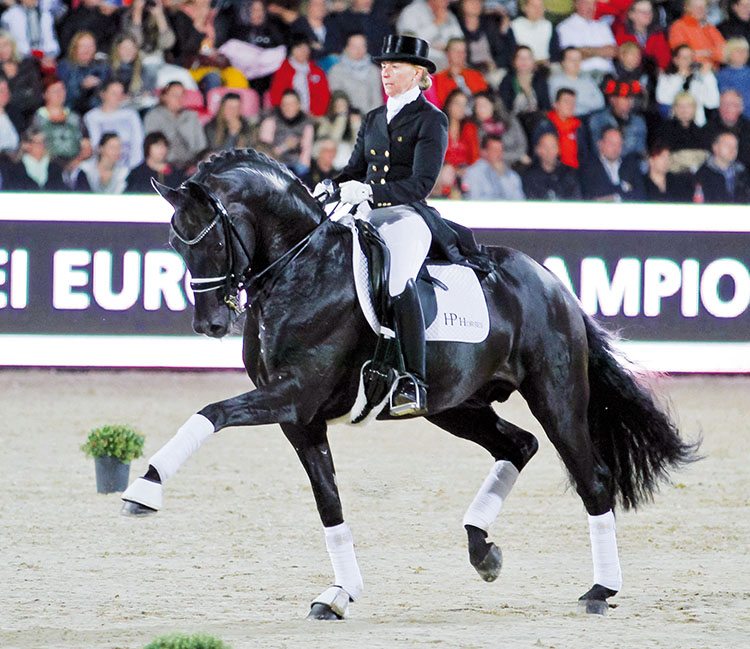
or Fürstenball


